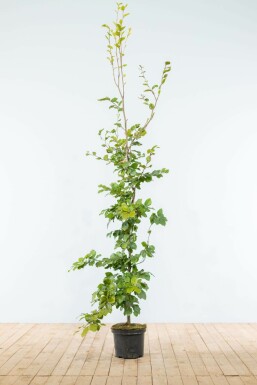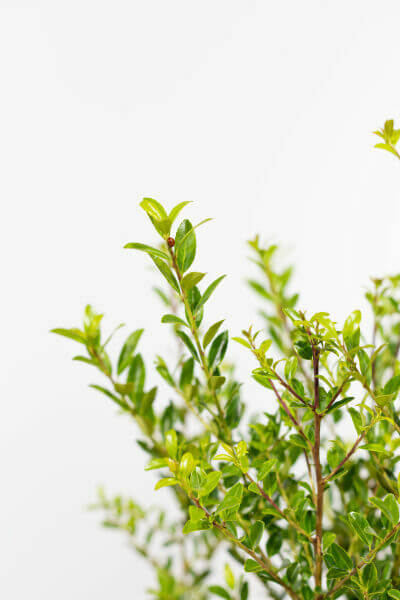Hedge Plants For Creative Landscaping
Hedge Plants For Creative Landscaping
Blog Article
Hedge Plants For Creating Spaces
Improve your garden's attraction with rich hedge ranges such as Yew (Taxus), Thuja, Laurel, Photinia, and Bamboo, celebrated for their structural integrity and environmental advantages.
Yew and Thuja provide evergreen protection and winter season resilience, while Laurel provides quick growth and broad, fragrant leaves.
Photinia includes seasonal charm with its dynamic red foliage, and Bamboo provides a low-maintenance, serene ambiance.
These hedges enhance air quality, reduce noise, and produce tranquil, personal spaces.
Correct planting, spacing, and maintenance guarantee energetic development and ecological harmony.
Check out how these lavish ranges can raise your garden's beauty and well-being.
Key Takeaways
Change Your Garden With Lush Hedge Ranges
- Select Yew for its thick, evergreen growth and unrivaled durability.
- Go with Laurel for its quick development and broad leaves, ensuring quick privacy.
- Select Photinia for its dynamic seasonal foliage, which turns a striking dark red.
- Use Bamboo for a low-maintenance, winter-hardy hedge with visual appeal.
- Area plants 2-3 per meter and prune routinely for ideal development and health.
Popular Hedge Plants
When changing a garden with lavish hedge ranges, it's important to consider popular hedge plants such as Yew, Thuja, Laurel, and Photinia due to their distinct qualities and benefits.
Yew (Taxus) is highly esteemed for its longevity and dense, green growth, making it a prime choice for sustaining landscapes.
Thuja is kept in mind for its evergreen foliage and robust winter season strength.
Photinia includes seasonal vibrancy with red leaves that darken with time, developing vibrant visual appeal.
Laurel offers rapid growth and fragrant, broad leaves, ideal for fast personal privacy.
In Addition, Bamboo is an exceptional option for ambiance, offering a low-maintenance, winter-hardy choice that enhances the garden's aesthetic with its classy, swaying walking canes.
These choices accommodate a variety of horticultural requirements and choices.
Benefits of Garden Hedges
Garden hedges offer a plethora of advantages, making them an important addition to any landscape. These natural barriers are economical to implement and supply substantial wind security, enhancing air blood circulation and adding to noise decrease. The dense foliage of hedges like Thuja and Beech makes sure privacy by blocking exposure, creating a remote and peaceful environment.
Hedges also play an important role in microclimate guideline, providing a steady environment that fosters plant development and reduces temperature level changes. Their detailed leaf structures filter contaminants, enhancing air quality and contributing to a much healthier garden ecosystem.
Additionally, hedges stand out in sound reduction, taking in and deflecting sound waves to lower ambient sound levels. This dual performance of supplying both acoustic and visual personal privacy enhances the general harmony and aesthetic appeal of any garden.
Planting and Upkeep Tips
For a successful hedge, meticulous preparation of the planting area is vital. Ensure the soil has correct pH and drainage to support strong root development.
Area the plants properly for the chosen species. Water the hedge regularly throughout its initial growth stage, changing as needed with seasonal changes.
Implement a systematic pest control and disease avoidance method, utilizing chemical or organic treatments when needed. Frequently inspect for aphids, mites, and fungal infections.
Apply mulch to retain moisture and suppress weeds. Seasonal pruning promotes dense growth and air flow, vital for plant health.
Following these standards will assist you cultivate a lively, well-maintained hedge that enhances the charm of your garden.
Spacing and Trimming Guidelines
Spacing and Trimming Guidelines
Appropriate spacing and trimming are essential for cultivating healthy, visually appealing hedges. Sufficient spacing makes sure each plant gets enough nutrients, light, and air flow.
Follow these standards for ideal hedge upkeep:
- Spacing: Position hedge plants 2-3 plants per meter to encourage robust growth.
- Pruning Methods: Regular pruning is essential for maintaining desired hedge height and shape. Cut brand-new development in summertime and cut back older wood during winter.
- Seasonal Care: Change cutting techniques and schedules according to seasonal requirements to guarantee plant health.
- Hedge Height: Regularly display and trim to preserve the desired hedge height and accomplish consistent looks.
Following these steps will ensure your hedge flourishes, improving both the appeal and functionality of your garden.
Selecting the Right Hedge
Selecting the Right Hedge
Selecting the appropriate hedge involves evaluating factors such as fully grown height, foliage density, and ecological strength. Effective hedge plant selection needs understanding each species' development qualities and site-specific adaptability.
For instance, Yew (Taxus) provides outstanding durability and dense development, while Thuja is noteworthy for its winter durability. Additionally, considering maintenance requirements is vital; fast-growing species like Laurel or Privet need regular cutting, whereas low-maintenance choices like Bamboo or Ivy may be more suitable for those looking for minimal maintenance.
Environmental factors such as soil type, light accessibility, and wetness conditions need to also assist the selection procedure. This careful method ensures the selected hedges will grow, providing both aesthetic and practical advantages to the garden landscape.
Delivery and Planting Guidance
To guarantee your hedge plants grow, they should be delivered by specialized carriers and planted promptly upon arrival.
Follow these important actions for effective planting:
- Soil Preparation: Enrich the soil with organic matter to improve drain and nutrient material.
- Planting Depth: Create a trench twice the width and equal to the depth of the root ball.
- Watering Methods: Water completely after planting, keeping the soil regularly damp but not filled.
- Mulching: Apply a layer of mulch to keep wetness and reduce weeds.
Consumer Support and Service
Given the essential function of timely support in horticultural pursuits, our client assistance group is readily available 6 days a week through telephone, e-mail, and social media to offer expert guidance and quickly attend to any concerns. Their dedication to quick response times ensures customer complete satisfaction by dealing with inquiries associated with plant health, ideal planting techniques, and maintenance schedules.

Telephone
6 days a week
Within 24 hours
This thorough assistance system, reinforced by an outstanding 9.3/ 10 customer score, highlights our dedication to boosting the gardening experience for every single customer.
Frequently Asked Questions
How Long Does It Take for Hedge Plants to Establish?
Hedge plants typically require one to three years to become fully established, with the exact duration varying by species and growing conditions.
Effective care during this vital period is necessary for robust development. Constant watering, alert weed control, and proper fertilizer application are critical in promoting strong root advancement.
For example, fast-growing species like Laurel may develop faster, while slower-growing ranges such as Yew might take longer. Persistent maintenance speeds up the facility procedure, resulting in thick and healthy hedges.
What Are the Finest Hedge Plants for Privacy?
The question of the very best hedge plants for personal privacy includes assessing evergreen and deciduous options.
Evergreen hedges like Thuja, Laurel, and Cypress offer year-round coverage, making sure continuous privacy.
On the other hand, deciduous hedges such as Beech use seasonal personal privacy, shedding leaves in cooler months.
Secret maintenance tips for personal privacy hedges include regular cutting, fertilizing in spring, and appropriate spacing-- typically 2 to 3 plants per meter.
In addition, consistent watering and thorough weed elimination are crucial for promoting healthy, thick growth.
Can Hedge Plants Attract Wildlife to My Garden?
Yes, hedge plants can attract wildlife to your garden by supplying necessary benefits like shelter, food, and nesting websites, consequently enhancing regional biodiversity. Yew, holly, and laurel are exceptional for bring in birds, while ivy supports a variety of pests.
However, it is very important to note that there are some downsides, such as increased maintenance to handle pests and routine upkeep. Thoroughly selecting and preserving hedge varieties can assist balance these disadvantages and advantages, ultimately promoting a lively and sustainable community in your garden.
Exist Any Flowering Hedge Plants Available?
Yes, there are flowering hedge plants offered that can enhance the beauty of your garden.
For example, Elaeagnus, likewise called Olive Willow, produces fragrant white flowers in the fall, adding a touch of sophistication.
Photinia, another popular option, showcases vibrant red leaves that develop into an abundant green, developing a vibrant visual effect throughout the seasons.
To ensure these plants prosper, it's important to practice proper pruning techniques and seasonal maintenance, such as trimming new growth in the summertime and cutting down in the winter season.
These measures will help maintain the health and aesthetic appeal of your flowering hedges.
How Do I Avoid Bugs in My Hedge Plants?
To avoid bugs in hedge plants, use natural bug control approaches and keep proper hedge care. Present beneficial insects like ladybugs, which prey on harmful bugs, to create a balanced ecosystem.
Regularly inspect your hedges for signs of infestation and quickly eliminate any affected parts to prevent the spread. Make sure the health of your hedges by using well balanced fertilizers and offering sufficient water.
Use mulching to retain soil moisture and correct spacing to lower plant tension and promote robust growth. These practices jointly help in reducing pest issues and keeping a healthy hedge.
Conclusion
In essence, picking the best hedge varieties such as Yew, Thuja, and Laurel can change any garden into click here a relaxing haven. These plants provide year-round plant, improve aesthetic appeal, and deal practical benefits like sound reduction and wind protection.
Correct planting strategies, accurate spacing, consistent watering, and seasonal cutting are crucial for optimum growth.
Trustworthy delivery services and expert client assistance make sure a smooth experience from purchase to planting, making it simpler than ever to elevate your outside area.
Garden hedges use a multitude of benefits, making them a valuable addition to any landscape. These natural barriers are economical to carry out and supply substantial wind defense, boosting air blood circulation and contributing to noise reduction. The thick foliage of hedges like Thuja and Beech ensures privacy by obstructing visibility, creating a remote and peaceful environment.

Pruning Techniques: Routine pruning is necessary for preserving desired hedge height and shape. Cut brand-new development in summer season and cut back older wood throughout winter season.
Report this page